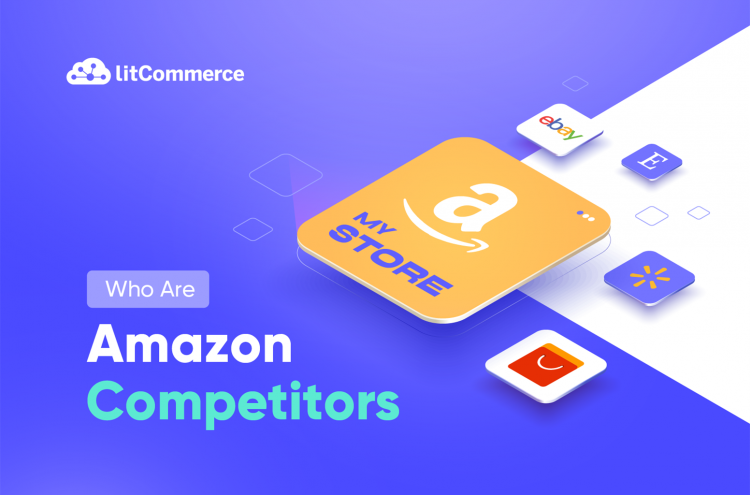Amazon, a global giant, has made significant strides in various industries, including eCommerce and non-eCommerce, such as video streaming or cloud services. However, in each industry where Amazon operates, Amazon competitors always find a way to grow in number and size to keep up with this giant.
So, who are the competitors of Amazon? What made them successful? And how they compete with Amazon. We will find out in this article.
Key Takeaways:
- Some Amazon’s main competitors in the eCommerce industry are eBay, Walmart, Target, Etsy, and AliExpress.
- In the streaming competition, Amazon competes with Netflix, Disney+, Max, and Apple TV+.
- The two biggest Amazon competitors in web services are Microsoft Azure and Google Cloud Platform.
Sell on More Marketplaces Besides Amazon
Why limit to one sales channel instead of joining the global game? Try out LitCommerce to sell everywhere affordably and effortlessly!
Top 25 Amazon Competitors in eCommerce Game
First, let’s look at the eCommerce industry. Amazon started as an online bookstore in 1995, and after nearly 30 years, it has established itself as the world’s number one online marketplace.
Amazon.com has over 2,5 billion visits each month, providing a wide range of products. With 57% of US online shoppers, Amazon is the first destination they have started their product hunt. In 2023, about 71 percent of U.S. Amazon shoppers were Prime members (around 180 million Amazon Prime users), showing how loyal and ready they are to buy on the platform. As Amazon operates globally, it faces competition from various companies in each country it joins.
Here are the main competitors of Amazon across the top eCommerce markets around the world:
- Asia: Rakuten, Shopee, Flipkart, and Taobao.
- The US and North America: eBay, Walmart, Target, and Best Buy.
- Europe: Otto, Cdiscount, OnBuy
eBay
eBay is one of Amazon’s direct competitors in the eCommerce world. Like Amazon, it is one of the oldest and most popular online marketplaces where users can sell and buy goods.
Amazon vs. eBay competition has never stopped since their foundation. eBay maintains a significant Amazon competitor in most of the leading eCommerce markets, including the United States, Canada, the United Kingdom, and Germany. Respectively, its regional sites are eBay.com, eBay.ca, eBay.co.uk, and eBay.de.
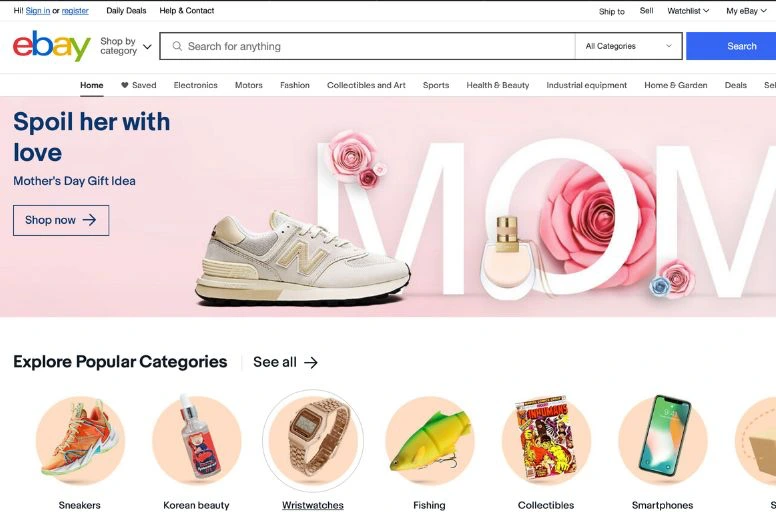
One of the benefits that sets eBay apart from Amazon is its auction model. This listing model allows buyers to bid on items and sellers to set their own prices. Moreover, being a big garage sale, eBay made it easier for individual sellers to list and sell their used items on the platform.
Meanwhile, Amazon positions itself as a general online marketplace. According to a report CiviSience published in March 2024, 57% of US adults have used eBay to buy secondhand luxury fashion and accessories online in 2023.
Comparing eBay vs Amazon, Amazon provides a fulfillment service called Amazon FBA, which helps sellers store, pick, pack, and ship the sellers’ items. Meanwhile, eBay does not offer fulfillment services.
In the first quarter of 2024, Amazon reported net sales of $143.3 billion, while eBay recorded a gross merchandise volume (GMV) of $18.6 billion. Despite Amazon significantly outpacing eBay, the latter remains a formidable competitor in the online shopping market.
eBay – The biggest Amazon competitor worldwide
While Amazon scores well for a wide range of products, eBay is more well-known for shopping for second-hand goods. So, if you want to sell your used items, eBay is your go-to place. Plus, Amazon uses fixed-price listings only, whereas eBay allows sellers to create auction-style listings or set a fixed price.
Walmart
Walmart stands as the biggest Amazon competitor in North America, with net sales of $420.6 billion in 2023, compared to Amazon’s $574.8 billion. Despite their focus on physical retail stores, Walmart keeps investing in technology, development, and marketing to grow their online market presence.
Walmart now operates approximately 10,500 physical stores and warehouse clubs in 19 countries. Meanwhile, Amazon seems to have a relatively small retail footprint of physical stores worldwide. As of May 2024, there are 22 Amazon Go and 41 Amazon Fresh store locations in the US and UK and 2 Amazon Style stores for fashion. This highlights the significant difference in the scale of physical presence between the two giants.
However, Walmart vs Amazon competition has been increasing recently. Similar to Amazon.com, Walmart’s online marketplace has emerged as one of the leading eCommerce platforms, allowing third-party sellers to list their products and shoppers to make purchases. Additionally, Walmart’s core strategy of low-price leadership has made it become one of the strongest Amazon competitors.
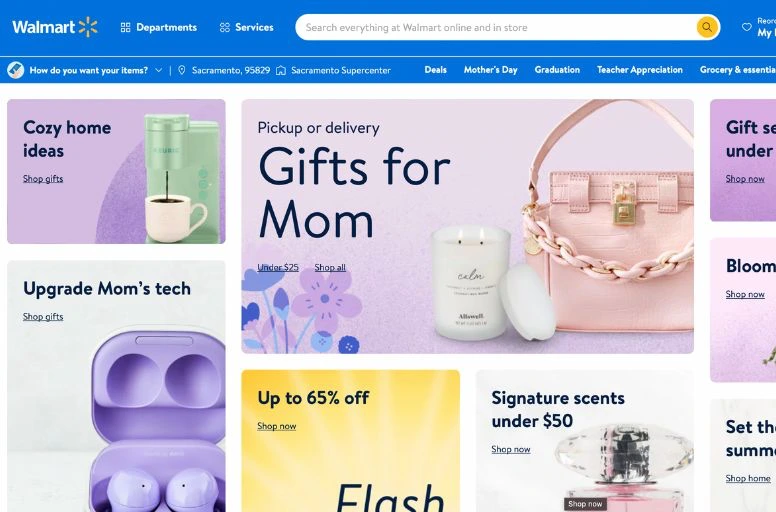
Research by Tinuiti reveals a substantial overlap between the customer bases of Amazon.com and Walmart.com, with over 57% of Amazon shoppers also making purchases on Walmart’s website. This overlap indicates that many consumers see Walmart as a viable alternative to Amazon for shopping.
In 2021, Walmart even launched Walmart+, a membership program to compete with Amazon Prime. This membership program offers benefits like free shipping with no minimum, local store delivery, fuel discounts, and mobile scan-and-go, providing perks to attract Amazon Prime customers.
Walmart – The biggest Amazon competitor in North America
Walmart competes fiercely with Amazon in North America, leveraging its extensive physical store network and online marketplace. Plus, low prices are also a core strategy for Walmart to compete with Amazon.
Target
Target is one of the largest and most popular Amazon competitors in traditional retailing in the United States, along with Walmart. Founded in 1902, Target has over 1,900 stores nationwide and a loyal customer base that values its quality, affordability, and convenience.
In 2019, Target launched its online marketplace platform, Target Plus, which competes with Amazon. Target Plus is a way for Target to expand its online selection and offer more choices to its shoppers. Its main advantage over Amazon is its ability to provide customers with a service similar to what they would experience in-store.
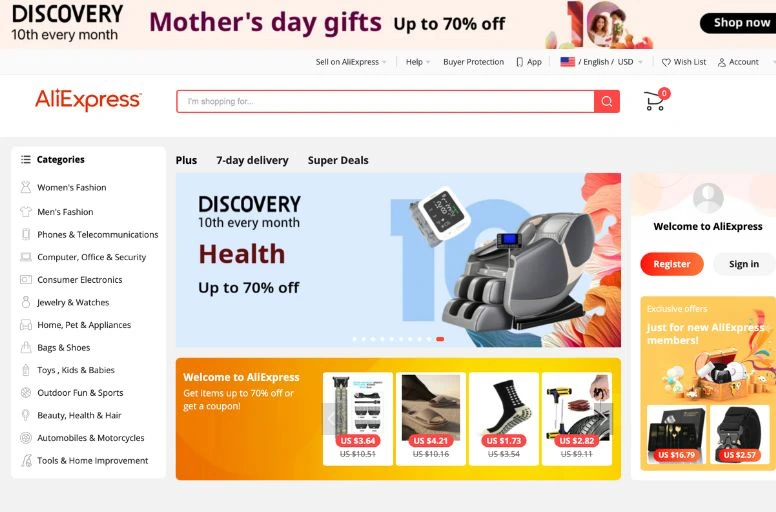
Another difference between Target and Amazon is that Target operates on an invitation-only basis. Target+ takes this cautious approach to ensure that its customers get high-quality product assortments and convenient experiences.
Considering the selling fees, Target does not charge sellers any monthly fees. However, sellers need to pay referral fees that can be between 5% and 15%.
Target – One of the biggest Amazon competitors
Target is a formidable competitor to Amazon, particularly in traditional retail and through its Target Plus online marketplace. Compared with Amazon, Target Plus offers a seamless in-store-like experience.
Etsy
Etsy is a major competitor of Amazon, particularly Amazon Handmade, in the handmade, vintage, and craft goods market. Founded in 2005, this Amazon competitor has become a go-to destination for customers seeking unique, handcrafted products for gifts, holidays, and personalized services. In 2023, Etsy boasted 97.3 million active buyers worldwide.
One of Etsy’s standout features that sets it apart as an Amazon Handmade competitor is its Gift Mode. This feature helps users find the perfect gifts tailored to recipient preferences, budget ranges, and special occasions such as Mother’s Day, birthdays, or holidays.

Comparing Amazon Handmade vs Etsy, the former only allows handmade items to be crafted by artisans or their employees. In contrast, the latter also values creativity but lets sellers offer mass-produced items, giving them more opportunities to sell.
Regarding selling fees, Etsy is cheaper than Amazon. On Etsy, sellers are charged $0.20 per listing and a 6.5% fee on each sale. In contrast, while there is no listing fee on Amazon Handmade, sellers face a 15% referral fee on every sale.
Etsy – The biggest Amazon comepetitor in the handmade, vintage, and craft goods market
Etsy stands out in handmade and vintage goods, allowing sellers to offer both unique artisanal products and mass-produced items with lower fees compared to Amazon Handmade.
Maximize your sales chances with LitCommerce!
Try LitCommerce to sell on 20+ platforms simultaneously and maximize your sales now!
Best Buy
Best Buy is a big competitor to Amazon in the United States and Canada. Unlike Amazon, which sells a wide variety of products, this marketplace focuses mainly on electronics. Best Buy has around 1,125 physical stores in North America. It sells items like phones, laptops, home audio equipment, cameras, drones, and gaming accessories.
Most of Best Buy’s revenue comes from sales in its brick-and-mortar stores. However, this marketplace also offers an eCommerce platform for selling products online, bestbuy.com. In 2023, Best Buy’s global sales were 46.3 billion U.S. dollars, and over 90 percent of the company’s revenue was generated in the United States.
Thus, this sales channel also has a program called My Best Buy, which competes with Amazon Prime by offering a premium shopping experience. There are three levels of membership: Standard (free), Plus ($50 per year), and Total ($180 per year). Members get benefits like free two-day shipping, special pricing, exclusive sales events, and discounts on repairs.
Best Buy – One of the biggest Amazon competitors in the US and Canada
Best Buy competes effectively in electronics retail with a robust online presence and My Best Buy membership program, providing exclusive benefits similar to Amazon Prime.
Otto
Otto is one of the biggest Amazon competitors in Germany and in Europe in general. Founded in 1949 in Hamburg, Otto can be seen as the oldest online marketplace on the list. When it started, products on Otto were originally ordered by mail and then by phone before they moved into online shopping in 1995.
Similar to Amazon, Otto offers customers various products and categories, from furniture and living to fashion and lifestyle. However, what Otto does to try to stand out from its competitors, including Amazon, is that it has strict criteria for the products and services it offers.
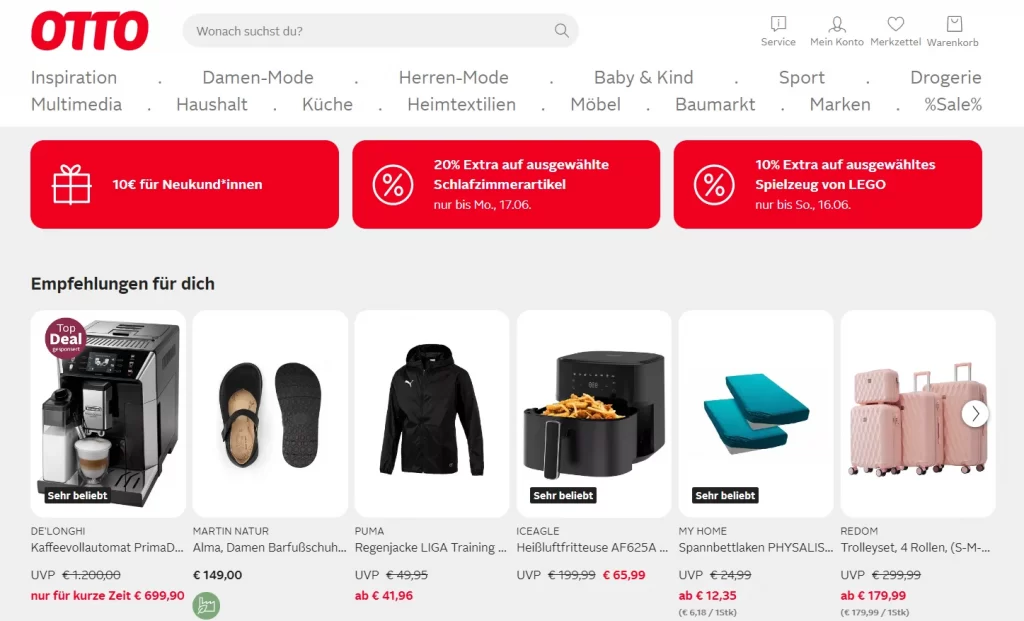
To show their commitment to product criteria, Otto CEO Marc Opelt states, “We rely on products that meet the highest quality and sustainability standards. Therefore, we carefully select who may sell their goods on our marketplace—and who may not. In the future, cheaply produced disposable items will also not play a role in Otto’s business model.”
Otto one of the biggest Amazon competitors in Germany
Otto competes with Amazon in Europe. This marketplace focuses on quality and sustainability, maintains strict seller criteria, and offers a curated shopping experience.
Cdiscount
Cdiscount is the second-largest online marketplace in France, thus an Amazon’s main competitor in this country. Even there is a gap between Amazon and CDiscount, with over 23 million monthly visitors and over 10 million active customers, Cdiscount still provides a promising and potential place for sellers to reach French customers.
Like Amazon.fr, Cdiscount offers a variety of products, including electronics, home goods, fashion, toys, and sports equipment. However, as its name suggests, this Amazon rival differentiates itself by offering various discounts on a wide range of products.
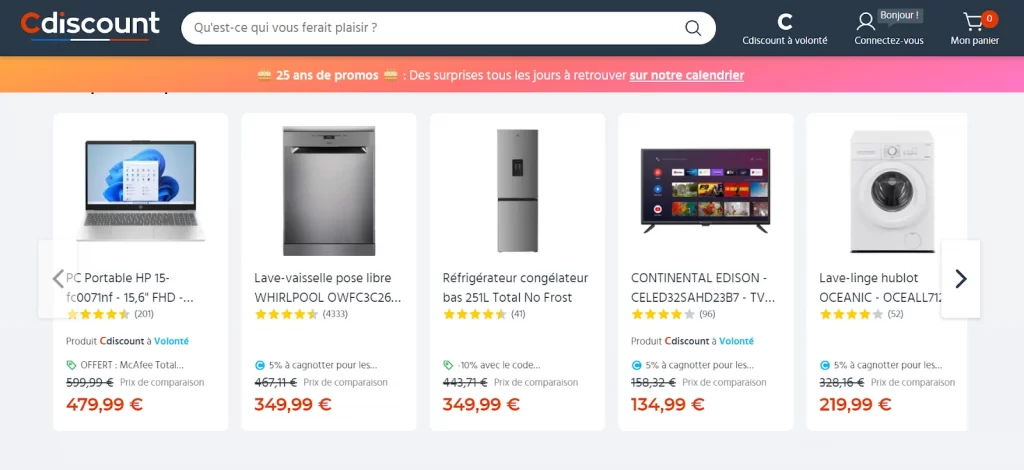
Moreover, Cdiscount is known for its low prices, fast delivery, and popular membership program called “Cdiscount à Volonté” with exclusive benefits similar to Amazon Prime. The platform provides helpful services for sellers, like Cdiscount Fulfilment for managing logistics, Cdiscount Ads for advertising.
With its variety of features and focus on customer satisfaction, Cdiscount is a strong alternative to Amazon.fr for both shoppers and sellers in France.
Cdiscount – One of the biggest Amazon competitors in France
Cdiscount, with its low prices, diverse offerings, and exclusive discounts is a strong alternative to Amazon.fr for both buyers and sellers in France.
OnBuy
OnBuy is an online marketplace that stands out as one of the strong Amazon competitors in the UK. Even though Amazon remains the largest eCommerce platform in the United Kingdom, OnBuy is still an Amazon competitor that should be watched out.
Launched in November 2016 in the UK, OnBuy has quickly become the fastest-growing marketplace in the world, with over 600% year-on-year growth in the past three years. The platform now boasts over 8 million active buyers and offers more than 35 million products across various categories, including books, toys, cosmetics, and musical instruments.
One of OnBuy’s key strengths is its commitment to providing a fair and transparent marketplace. OnBuy does not sell its own products, giving more room for sellers to sell and grow. Whereas, Amazon offers a range of private-label products under various brands, such as AmazonBasics, and Amazon Essentials, alongside third-party sellers, making this online marketplace more competitive. Thus, this approach of OnBuy fosters a level playing field for businesses of all sizes.
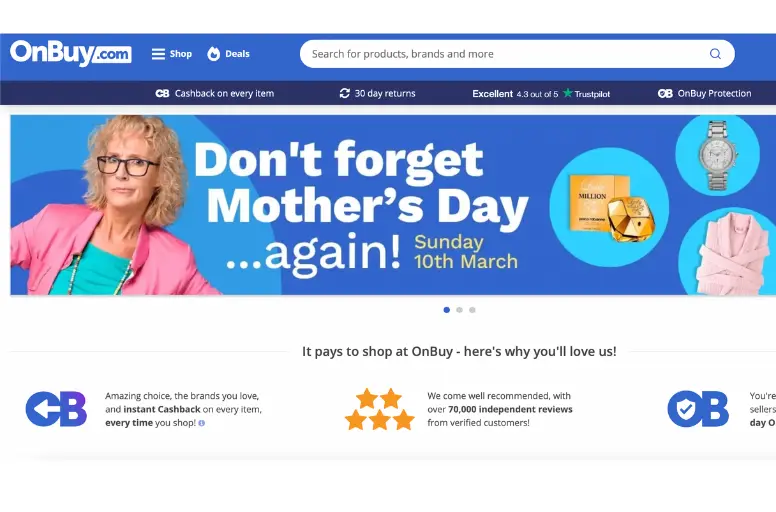
Another advantage of OnBuy is the ease with which sellers can set up their stores. The process is simple: fill out a form on their website, and you can start selling within a day. This user-friendly approach makes OnBuy an appealing alternative for sellers looking for a straightforward and supportive platform.
OnBuy – One of the biggest Amazon competitors in UK
OnBuy is a growing Amazon competitor in the UK, offering a fair and transparent marketplace exclusively for independent sellers, with simple onboarding and affordable fees.
Rakuten
Rakuten is Amazon’s biggest competitor in Japan. Like Amazon, this marketplace allows businesses to sell directly to consumers across various categories, such as electronics, clothing, and cosmetics. In Japan, Amazon and Rakuten are considered neck and neck as the most popular marketplaces. Amazon Japan has 556 million monthly visits, while Rakuten has 544 million.
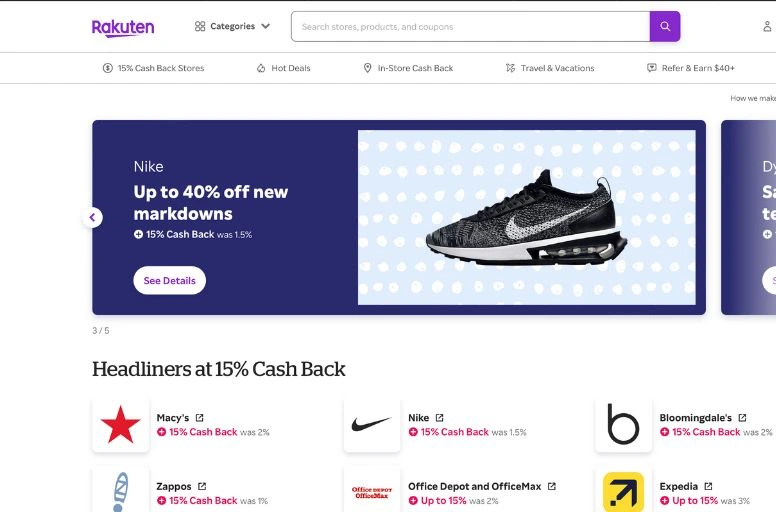
However, what makes this Japanese eCommerce giant stand out from Amazon is its unique virtual shopping mall experience. Instead of just lining up products like on Amazon, Rakuten lets you “stroll” through your favorite brands.
Plus, to compete with Amazon Prime, Rakuten also has a loyalty program called Super Points. This program lets customers earn and redeem points on different products and services.
Rakuten – The biggest Amazon competitor in Japan
Rakuten competes strongly in Japan with a diverse product range and unique virtual shopping experience, supported by its loyalty program, Rakuten Super Points.
Flipkart
Flipkart is Amazon India’s main competitor and the largest homegrown eCommerce marketplace in the country. Founded in 2007 by Sachin Bansal and Binny Bansal, it was acquired by Walmart in 2018 for $16 billion. Since then, Flipkart has expanded its offerings to include groceries, travel services, digital payments, and more. As of 2023, Amazon and Flipkart hold about 30% of India’s retail eCommerce market.
Flipkart boasts over 400 million registered users and offers 150 million products across over 80 categories, including mobiles, fashion, appliances, furniture, books, and more.
On Flipkart, sellers can use various features such as Flipkart Fulfillment, Flipkart Ads, and Flipkart Seller Hub. These services are designed to rival Amazon’s Fulfillment by Amazon (FBA), Amazon Advertising, and Amazon Seller Central. For shoppers, the Flipkart VIP program is the latest addition to the platform’s suite of benefits, providing a competitive alternative to Amazon Prime.
Flipkart – The biggest Amazon competitor in India
Flipkart is Amazon’s biggest competitor in India, offering a marketplace with similar features to those of the e-commerce giant. However, Flipkart stands out with its tailored approach, incorporating local payment methods and regional shipping carriers, making it more consumer-friendly for the Indian market compared to Amazon.
AliExpress
With 525.45 million visits per month, AliExpress ranked fifth among the top online marketplaces in the world (by monthly visits) and is a significant Amazon competitor in the world.
Starting in 2010, this marketplace has been present in over 20 countries. AliExpress differs from Amazon because it not only sells its products to consumers but can also be a business-to-business marketplace where sellers can look for wholesale suppliers for their own businesses.
One of the positive aspects of AliExpress compared to Amazon is that there is no fixed cost for sellers on AliExpress. You will only pay for each product you sell. Commissions vary between 5% and 8%, depending on the product category. In contrast, selling on Amazon requires a subscription plan containing several Amazon selling fees, which are, in general, higher.
AliExpress vs Amazon
AliExpress competes globally with Amazon by providing a vast product range and no fixed seller costs, appealing to sellers seeking international market access.
Taobao
Taobao is a major marketplace in China and a significant competitor to Amazon. Launched in 2003 by Alibaba, Taobao has become a massive platform, serving both B2C (business-to-consumer) and C2C (consumer-to-consumer) markets. With over 500 million registered buyers and sellers, Taobao achieves an impressive 50,000 sales per minute.
The marketplace offers a wide array of products, ranging from phone cases to CNC machine parts. Most importantly, shoppers can purchase items at relatively low prices, which has made Taobao a preferred choice among budget-conscious consumers.
Amazon faced challenges in China’s eCommerce landscape due to strong local competition. In July 2019, Amazon officially closed its online marketplace in China.
Amazon – One of the biggest Amazon competitor in China
Taobao is a strong competitor of Amazon in China. This Chinese giant is well-known for allowing customers to find products at remarkably low prices.
Shopee
Shopee is one of Amazon biggest competitors in the Southeast Asian market with Lazada. Operating in Singapore, Malaysia, Thailand, Taiwan, Indonesia, Vietnam, and the Philippines, Shopee has demonstrated steady growth. In 2017, it recorded 245 million orders. By 2023, this figure surged to an impressive 8.2 billion orders, totaling $78.5 billion in gross merchandise volume.
Like Amazon, Shopee offers a diverse array of products, including electronic devices, fashion accessories, groceries, baby items, toys, and home goods. However, what sets Shopee apart is its focus on enhancing the mobile shopping experience and launching various promotional campaigns. Some successful ones are Double-Date days like the 5th of May or 6th of June, Flash Sales, Free Shipping offers, and Coins Cashback programs.
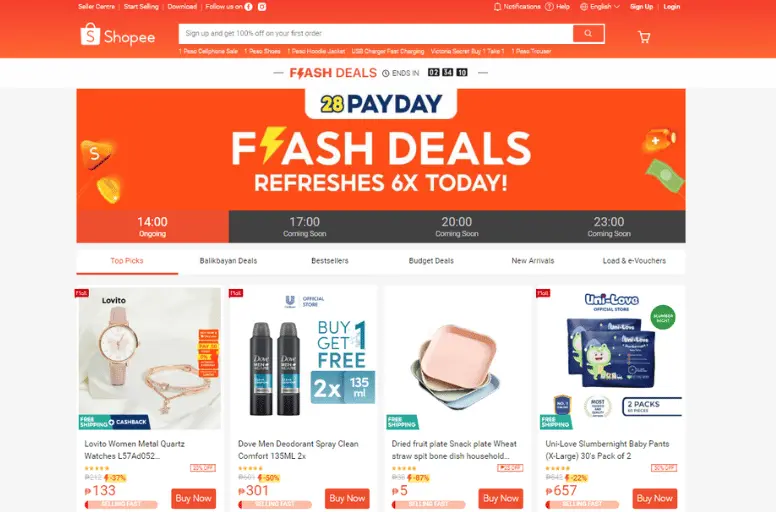
Additionally, Shopee has introduced Shopee Live to empower its sellers, a feature akin to Amazon Live, enhancing its platform’s engagement and sales potential.
Shopee – One of the biggest Amazon competitors in the Southeast Asia
Shopee can be seen as the biggest Amazon competitor in Southeast Asia. Shopee competes aggressively with a mobile-centric shopping experience, promotional campaigns, and features like Shopee Live to drive customer engagement.
10 other Amazon marketplace competitors
Amazon sells everything from electronics to groceries, but it’s not the only option out there. Many other companies focus on specific products and offer unique shopping experiences. Here are some strong Amazon competitors and what they specialize in:
- Books: Barnes & Noble, Books-A-Million.
- Fashion: Zalando, Shein, Fashion Nova, ASOS.
- Home and Garden: Wayfair, Home Depot, IKEA.
- Cosmetics: Sephora.
These companies are leaders in their areas, offering a variety of choices that cater to different tastes and needs compared to Amazon.
Multiply Your Sales with LitCommerce
Integrate Amazon with more marketplaces, such as eBay, Etsy, and TikTok Shop, to boost your sales – with just one click with LitCommerce.
4 Amazon Competitors in Video Streaming
Besides dominating the online shopping market, Amazon also jumped into the TV streaming arena with Amazon Prime Video.
In this industry, what makes Amazon different from its competitors is the mixed bag that keeps viewers streaming from classic shows like The Office to cinema blockbusters like Everything, Everywhere, All at Once. Amazon Prime Video also has some really successful exclusives, such as The Rings of Power, Mr. Robot, and Vikings.
In 2024, Prime Video launched The Idea of You with Anna Hathaway’s presence and gained a huge success of 50 million worldwide viewers in its first 2 weeks on the streaming platform.
Regarding the subscription-based streaming service in 2024, some of the main Amazon competitors include Netflix, Disney+1, Max, and Apple TV+. Each brand offers something unique to attract its users. Let’s discover what it is.
# | Streaming Platform | Subscribers (in millions) |
1 | Netflix | 260.28 |
2 | Amazon Prime Video | 200.00 |
3 | Disney+ | 149.6 |
4 | Max | 99.6 |
5 | AppleTV | 44.1 (estimated) |
Netflix
Netflix is the biggest Amazon competitor. It is the leader in the streaming service market, with a remarkable total of 260.28 million subscribers in more than 200 countries worldwide. Amazon Prime Video, on the other hand, does not regularly disclose its subscriber numbers, but a letter from the CEO to shareholders indicated it had “over 200 million” subscribers as of April 2024.
In terms of revenue, Amazon Prime Video leads with its subscription services alone, generating $10.48 billion in net sales for Q1 2024. This is significantly higher than Netflix’s $9.37 billion revenue for the same quarter.
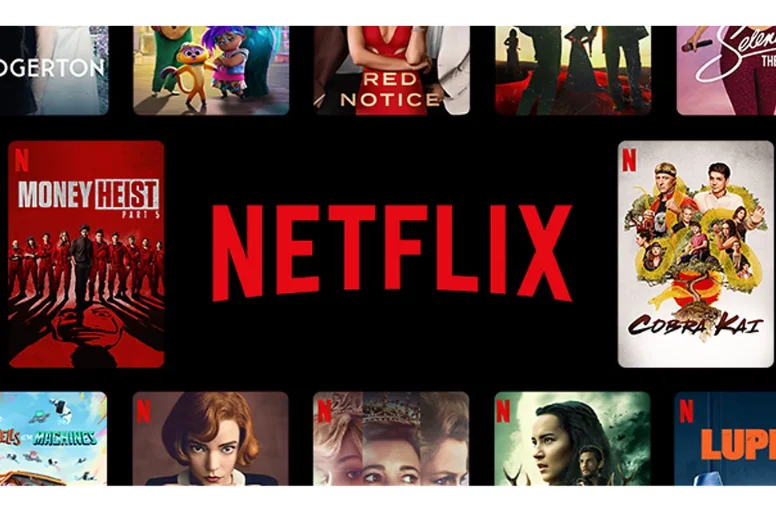
Similar to Prime Video, Netfilix offers viewers a wide range of series, movies, and documentaries. To maintain its uniqueness, Netflix expanded its library of original content. Some well-known Netflix originals are Stranger Things, Orange Is The New Black, The Crown, and Tiger King.
In the battle for streaming dominance, Netflix leads in subscriber numbers, but Amazon Prime Video excels in revenue.
Disney+
Disney+ is the second name on Amazon’s competitors list in the streaming industry. In the first quarter of 2024, Disney+ had 149.6 million subscribers and is estimated to have 153.6 million users by the second quarter. Plus, Disney Plus has increased its revenue by 13% in 2023, generating over $8 billion for the media conglomerate, demonstrating how successfully it entered the streaming wars.
This Amazon rival creates its own unique content, including the biggest debut Star Wars show, The Mandalorian. Moreover, it has a library of MCU, Disney Channel, Pixar, and Fox content, attracting viewers looking for more than just classic films and TV series on Amazon.
Max
Max (formerly HBO Max) is the next Amazon competitor in the streaming war. Warner Bros. Discovery’s Q1 earnings report revealed that Max recently added 2 million subscribers, bringing its total to 99.6 million.
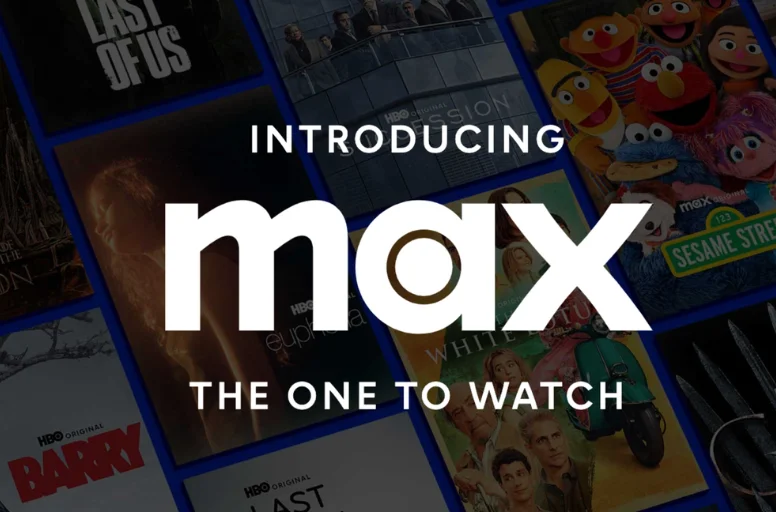
This streaming brand has a big collection of movies and TV shows from HBO and Warner Bros. Some special Max shows are House of the Dragon, Succession, The Last of Us, Veep, and The Wire. Many other streaming services, including Amazon Prime Video, only have a little.
Even though Max dropped many popular shows last year, such as Westworld, its unique content still makes it one of Amazon’s rivals to watch in 2024.
Apple TV+
Apple TV+ is the last name on the list of Amazon competitors in the streaming industry. Launched in 2019, the selection of shows and movies on Apple TV+ is pretty tiny compared to Amazon Prime Video. Some others have limited content, like Ted Lasso, The Morning Show, and Severance.
However, Amazon should keep an eye on Apple TV+ in this competition, as this service is so convenient for Apple fans. Apple TV+ users can use it on multiple devices and watch in ultra-HD. Plus, if they’re new Apple customers, they can get a whole year for free. This platform attracts more users with its cheap-price strategy, which costs only $6.99 per month. Estimates from Statista say that Apple TV+ could reach 44.1 million viewers in the United States.
2 Biggest Amazon Web Services Competitors
In addition to the commerce and streaming industry, Amazon has expanded its operations into cloud computing through its Amazon Web Services (AWS). Companies can utilize various AWS services such as computing power, storage, and databases instead of buying and managing their own IT equipment and maintaining a complex IT infrastructure.
While Amazon leads the cloud market with a 34% market share, it does not go unchallenged. So, who competes with Amazon in the area of cloud computing? Some of the major Amazon competitors within this field are the following:
Microsoft Azure
Microsoft Azure is second to Amazon in terms of market share, with over 24% in 2024. This Amazon competitor provides a comprehensive cloud computing platform with various services, including virtual machines, storage, databases, analytics, and Artificial Intelligence (AI). These capabilities are increasingly appealing to businesses of all sizes seeking a flexible and secure cloud environment.
Compared to Amazon’s AWS, Azure’s pricing structure is a key advantage, making it particularly attractive for those seeking cost-effective solutions for services like storage and bulk data processing.
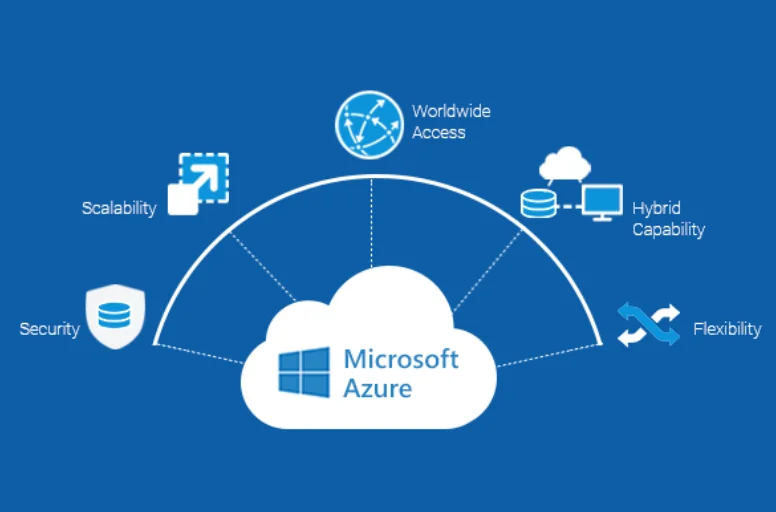
Google Cloud Platform
Google Cloud Platform (GCP) is one of the three largest cloud companies on the planet, along with AWS and Microsoft Azure. Launched in 2008, it offers relatively cheaper pricing, making it a formidable Amazon alternative.
In Q1 2024, the tech giant captured an 11% global cloud market share. GCP’s strength lies in its unified technological infrastructure, promoting interconnectivity, a superior user experience, and faster innovation compared to AWS.
However, GCP offers fewer services than AWS, particularly in computing, IoT, and enterprise applications.
Amazon Competitors – FAQs
Amazon’s biggest rivals include eBay, Walmart, Target, Etsy, and other localized eCommerce marketplaces such as Shopee and Otto. For video streaming services, Amazon’s biggest direct competitors are Netflix, Disney+1, Max, and Apple TV+. As for web services, Amazon’s biggest competitor is Microsoft Azure. Based on Similarweb’s monthly visits data, eBay is Amazon’s biggest competitor in the UK eCommerce market. In May 2024, eBay.co.uk attracted 224 million visits, trailing behind Amazon.co.uk’s impressive 333.7 million. Other notable Amazon competitors in the UK are JohnLewis.com, Currys.co.uk, Etsy.com, and AliExpress.com. The closest competitors to Amazon Canada are Walmart Canada (walmart.ca) and eBay Canada (ebay.ca). In May 2024, eBay and Walmart were the top-visited online marketplaces in Canada. Yes, regarding reliability, most of Amazon’s main competitors, such as eBay, Walmart, Target, Etsy, have a strong reputation for reliability. Yes, there are companies and online stores like Amazon that offer free shipping. For example, Walmart offers free two-day shipping on orders over $35, and Target offers free two-day shipping on orders over $35 for RedCard holders. Chewy also offers free one to two-day shipping on orders over $49. Investing heavily in U.S. online shopping, Shein, TikTok, and eCommerce company Temu are Amazon’s newest competitors. TikTok launched a shopping tool on its app last year, and millions of individuals have made purchases through links on or directly within the platform. Meanwhile, Shein has become America’s largest fast-fashion seller.
Moreover, when Amazon enters a new country, local companies similar to Amazon are its new competitors. For example, when Amazon enters Southeast Asia, Lazada and Shopee are the main Amazon competitors.
Amazon Competitors in Summary
In conclusion, although Amazon is the strongest player in eCommerce and cloud computing and remains a key player in streaming services, there are plenty of Amazon competitors in these fields. Each player keeps leveraging its strengths and creating its unique value to compete with Amazon.
The competition has become intensively pressing, and these are the main competitors that pose a severe challenge to Amazon in specific markets:
- In retail and eCommerce: eBay, Walmart, Target, Etsy, Best Buy, Otto, Rakuten, Flipkart, Cdiscount, AliExpress, Alibaba Group, Taobao, Shopee, Shopify, and several other Amazon competitors in each product sector.
- In streaming services: Netflix, Disney+, Max and Apple TV+.
- In web services: Microsoft Azure and Google Cloud Platform.
Are you looking for ways to grow your growing eCommerce business? Check out our LitCommerce tool – a solution that simplifies your multichannel selling effort through various channels such as Amazon, eBay, Etsy, Shopify, WixCommerce, etc. To stay updated with the latest trends and changes in the eCommerce industry, follow our Retailers Blog. Drop us a message if you have any questions!

